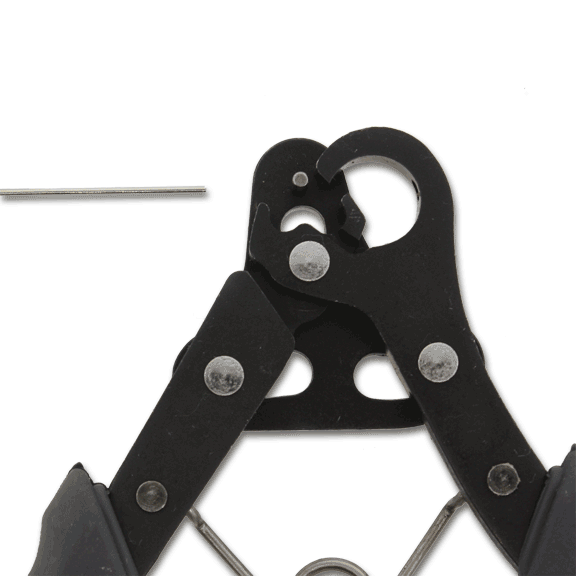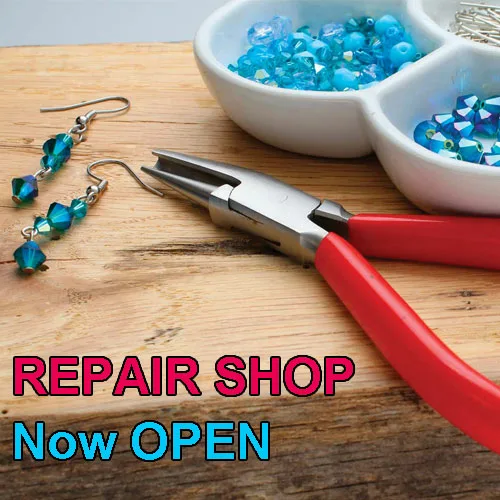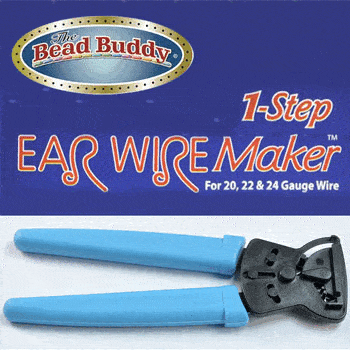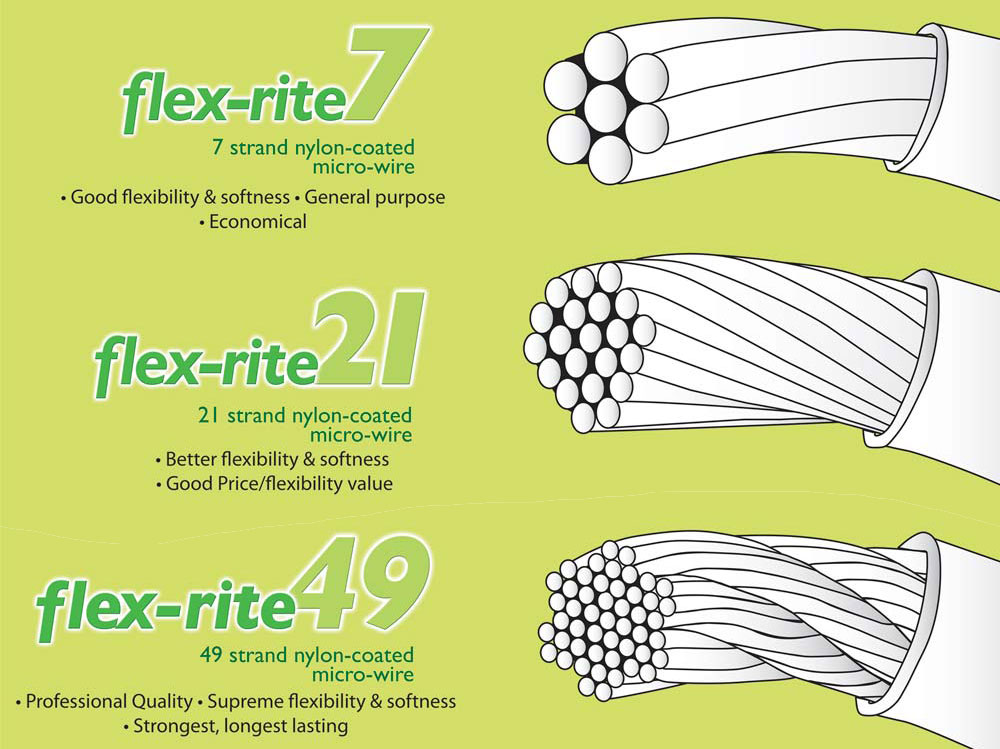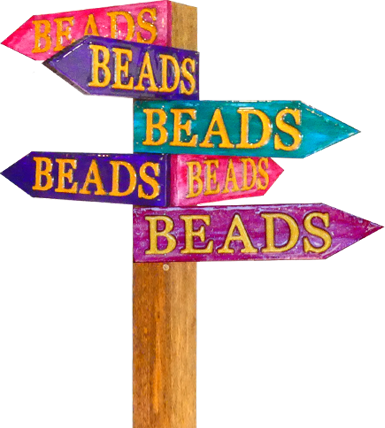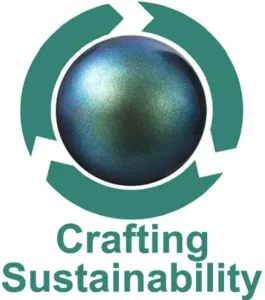Copper Wire for Jewellery Making: Tarnish-Resistant vs. Bare Copper, Creative Uses & Tools
Copper wire is a jewellery maker’s best friend – versatile, affordable, and oh-so-fun to work with! In this comprehensive guide, we’ll explore the different types of copper craft wire (and their copper content) from popular brands, how they achieve tarnish resistance, and the creative ways you can use them. Whether you’re wire wrapping a pendant, stringing beads, or even casting resin orgonite creations, we’ve got you covered with tips and enthusiasm to spark your creativity. Let’s get wired into the world of copper wire for jewellery making!
Popular Copper Wire Brands and Their Copper Content
Not all copper wires are created equal. Different brands have unique formulations and coatings, but they all share one thing – a copper core that makes them easy to shape and beautiful to wear. Here’s a look at three popular wire brands and what they’re made of:
- German Style Wire: Despite its name, German Style wire isn’t about language – it’s about quality! This wire is a copper and brass alloy (rich in copper content) with a special clear coating that keeps it shiny. It has a half-hard temper, meaning it’s slightly stiff – perfect for holding shapes in wire wrapping (think rings, bracelets and intricate wraps) without being too difficult to bend. The copper content gives it that warm tone and malleability, while the brass adds strength. The result is a durable wire that’s great for beginners and experienced wrappers alike.
- Artistic Wire: A favorite among jewellery crafters, Artistic Wire is a copper-core craft wire available in a range of colors and metals. In most Artistic Wire, the copper core is covered with a colored enamel finish (when not a base metallic colour) and then a clear coating to make it “permanently” tarnish resistant. The manufacturer’s special enameling process means the color won’t easily scratch or flake, and the clear coat keeps the metal from oxidizing (tarnishing). So, any coloured Artistic Wire (whether it’s silver-plated, rose gold color, black, brasss—you name it) still has that copper at its heart. For those wondering, yes, you’re crafting with real copper, just fancied up with colors and a protective skin. Importantly, Artistic Wire also offers a Bare Copper range (more on that in a moment) with no coating at all.
- The Beadsmith Wire Elements: Wire Elements (by The Beadsmith) is another popular line of craft wire for jewellery making. Like Artistic Wire, it boasts a very high copper content – in fact, the wire core is 99.99% pure copper. This copper wire is then color-coated in various metallic hues (silver, gold, antique copper, etc.) and lacquered for tarnish resistance. Wire Elements typically comes in a medium (half-hard) temper, making it strong yet shapeable. If you’re using Wire Elements, you can be confident you’re working with nearly pure copper beneath that finish – great conductivity (if you’re into electronics or just the metaphysical properties of copper) and great workability for crafts.
Each of these brands gives you the benefits of copper – flexibility, warm color, and ease of use – with their own twist. The big question many crafters have is: how do they keep the copper from tarnishing? Let’s unravel that mystery next.

Tarnish-Resistant Copper Wire: The Secret of Shiny Wire
One of the wonderful (and sometimes frustrating) things about copper is that it loves to react with the air. Over time, bare copper will darken, dull, or develop a greenish patina (think of the Statue of Liberty!). While an aged patina can be beautiful in vintage-style pieces, most of us want our jewellery wire to stay shiny unless we choose to oxidize it. That’s where tarnish-resistant copper wire comes in, and it’s a game-changer for jewellery making.
How do manufacturers make copper wire “non-tarnish”? They use proprietary clear coatings to protect the metal. Essentially, the copper (or copper-alloy) wire is either electroplated with a thin layer of another metal and then lacquered, or it’s enamel-coated with color, and finally sealed. For example, Artistic Wire’s process involves applying colored enamel to the copper, then adding a clear coat to prevent any oxidation. This clear coat is super thin and nearly invisible – you won’t notice it except that your wire stays the same color week after week. Each brand has its own formula (their secret sauce!) for these coatings, but in practical terms they all create a barrier between the copper and the air.
Thanks to these coatings, tarnish-resistant copper wire is ideal for everyday jewellery that might be exposed to the air, oils from your skin, or humidity. You can confidently use wires like Beadalon German Style, Wire Elements, and the colored Artistic Wires knowing they’ll hold their color. Just remember: while the coatings are durable, they’re not indestructible – heavy wear or harsh bending can scratch the coating. To avoid this, use nylon-jaw pliers or coat your tool tips, so you don’t accidentally nick the finish while working. Treat your wire gently and it will reward you by staying shiny for ages!
All the copper wires we stock at Beads N Crystals (except the bare copper range) are tarnish-resistant. This includes German Style Wire, all those vibrant Artistic Wire colors, and the Beadsmith Wire Elements line. We love them because they let you focus on your creativity, not on polishing your jewellery every other week.

Bare Copper Wire: Embrace the Patina!
Let’s shine a spotlight on Artistic Wire’s bare copper range, because it’s a bit different – in a very cool way. Bare copper wire is exactly what it sounds like: pure copper wire with no coating, no plating, no enamel. It’s just naked copper, ready to age and oxidize naturally. Now, you might wonder, “Why would I want my wire to tarnish?” – but jewellery artists know that bare copper is perfect for patina techniques.
Without a protective coating, copper will gradually darken and develop an antiqued look on its own. You can also speed up the process deliberately with chemicals or techniques (for example, using liver of sulfur to get a blackened antique finish or ammonia fumes for a blue-green verdigris effect). Artistic Wire bare copper is ideal for patina because it will readily react to create those rich, artistic colors that give an antique or bohemian character to your pieces. In fact, this bare copper line is sold with a note that it has no tarnish-resistant coating and “will patina, or naturally oxidize and darken with time to provide a vintage look”. For jewellery makers, that means you can create intentional oxidation patterns or simply enjoy watching your piece deepen in color as it ages – it’s like fine wine for wire!
Some fun ideas with bare copper wire:
- Oxidize and polish: Coil a bare copper wire into a pendant, then oxidize it with a patina solution. Gently polish the high points with steel wool. The recessed areas stay dark, while the raised areas shine – this really shows off textures or wire wrapping details.
- Colorful patinas: Use chemical solutions or even homemade methods (like vinegar and salt fuming) to grow blues, greens, or purples on the copper surface. Bare copper is your canvas for these organic art experiments.
- Leave it to nature: Make a piece with bare copper and just wear it! Over time, the exposure to air and touch will gradually deepen the color. If it ever gets too dark for your liking, you can always polish it back up or tumble it shiny again.
One thing to note: if you don’t want the tarnish on bare copper, you’ll have to polish it regularly or coat the finished piece with a clear sealant. But most crafters who choose bare copper do so because they adore that ever-evolving patina. It’s copper wire in its purest, most natural form, and it opens up a whole world of creative possibilities that coated wires can’t offer. So if you love the vintage look or mixed-media art, give bare copper a try!
(And remember, aside from Artistic Wire’s bare copper, most other coloured copper wires you find – including all the ones we carry – are already tarnish-protected for your convenience.)

Creative Copper Wire Projects & Uses
One of the best things about copper wire is that it’s incredibly versatile. There are endless copper wire projects you can dive into, from traditional jewellery pieces to innovative crafts. Here are some popular and fun ways to use copper wire in your creations:
- Wire Wrapping Jewelry: Perhaps the most beloved use of copper wire is in wire wrapping, a technique where you use wire to wrap around stones, beads, or other pieces to create pendants, rings, earrings – you name it. Copper is fantastic for this because it’s easy to bend and form, yet holds shapes well (especially the half-hard wires). You can wire-wrap a rough crystal point to make a boho necklace, form an intricate tree of life pendant with twisted copper branches, or even weave multiple wires together for an ornate ring. The warm hue of copper wire for jewellery making adds an earthy, artisan feel to wrapped designs. Plus, it’s relatively inexpensive, so it’s great for practicing and experimenting with new wire weaving patterns or elaborate designs without breaking the bank. Many artists prefer tarnish-resistant copper wire for wrapping, so the piece stays bright if it’s meant to look shiny, or bare copper wire if they plan to antique the piece afterward.
- Beading and Coiling: Copper wire isn’t just for wrapping stones – it plays nicely with beads, too! You can use copper wire to create wire bead links (for example, string a pretty bead on a wire and make a simple loop on each end; repeat and connect them to form a rosary-style chain or bracelet). Thinner gauges of copper wire can be threaded through beads to incorporate into designs or even to sew beads onto a filigree form. You can also make coiled beads out of the wire itself by coiling copper wire into spring-like beads or wrapping it around a mandrel to create jump rings, split rings or decorative coils. Mix and match copper with gemstone beads – the combination of metal and stone is classic in jewellery. Because most copper craft wire is plated or enameled in various colors, you can get creative: for instance, rose gold copper wire with pink beads for a monotone look, or bright green coated copper wire with contrasting beads for a funky artistic statement.
- Resin Art and Orgonite: Here’s where copper wire meets the world of craft wire projects beyond traditional jewellery. If you play with epoxy resin or other resins, consider embedding copper wire designs inside! A popular trend is making orgonite pieces – orgonite is a mix of resin, metal (often copper shavings or coils), and gemstones, poured into molds (like pyramid or cube shapes) and hardened. These are not only beautiful paperweights or pendants but are also believed by some to balance energy. Copper wire is often coiled into a spiral and placed into the orgonite mold along with little gemstone chips before pouring the resin. As the resin cures, it encases the copper coil and stones, creating a visually stunning piece. (In case you’re curious, “Orgonite is a man-made material composed of resin, metal shavings, and crystals…” – copper happens to be a favorite metal for this!). Even if you’re not into the metaphysical side, using copper wire in resin opens up so many creative avenues: you can make resin coasters with copper wire swirls, or resin jewelry with artistic wire shapes sealed inside (imagine a clear resin pendant with an intricate copper wire heart at the center!). The contrast of shiny copper and glossy resin is just gorgeous. And because most copper wire is tarnish-resistant, it will keep its colour inside the resin indefinitely.
- Mixed Media Crafts: Copper wire can venture outside jewellery and resin too. For example, use it in scrapbooking or card making to add a curly metallic accent. Create small sculptures or wire name signs (it’s easy to bend copper wire into words or shapes for personalized decor). Make tree sculptures or wire bonsai with copper (the wire’s earthy color is perfect for tiny tree trunks and branches, and you can add bead “leaves”). You can even incorporate copper wire in fabric or fiber art – e.g., stitch a thin wire along the edge of a ribbon to make it shapeable, or crochet with fine copper wire to create a metallic lace effect. The sky’s the limit – if you can dream it, copper wire can probably bend to your will!
With copper wire, you have an all-in-one art supply that crosses boundaries between jewellery making, sculpture, and DIY craft. Its versatility is why we’re so enthusiastic about it. Every scrap of wire can become something – even the little cut-offs can be saved to make headpins or tiny spirals to glue onto art pieces. So don’t be afraid to experiment and try new copper wire projects. You might discover a technique that becomes your signature style!

Essential Wire-Working Tools (We’ve Got You Covered!)
Working with copper wire is even more enjoyable when you have the right tools. If you’re just starting out in wire work, here are some must-have wire-working tools that we at Beads N Crystals are happy to stock for our fellow crafters:
- Pliers, Pliers, Pliers! You’ll want a few different types. Round-nose pliers are essential for making loops and curves (think earring loops, curly-Qs, and jump rings). Chain-nose or flat-nose pliers have flat gripping surfaces, perfect for holding wire, making sharp bends, and flattening coils. Bent-nose pliers are also handy to get into tight spots or open jump rings. And to protect that lovely tarnish-resistant finish on your copper wire, a pair of nylon-jaw pliers can be a lifesaver – they let you straighten or shape wire without scratching the coating.
- Wire Cutters: A good flush cutter will give you a clean, flat cut on your wire ends (no one likes a jagged edge). This is important for making neat finishes – e.g., when trimming the end of a wrapped loop or cutting wire for jump rings. We carry dedicated jewellery wire cutters that can handle copper wire in various gauges like a charm. Remember not to use your household scissors on wire (it will ruin them), and conversely, don’t use your delicate jewelry cutters on hardened steel (like memory wire) – have the right cutter for the job.
- Mandrels and Forms: To get perfect coils, curves, or rings, it helps to wrap copper wire around a consistent shape. Mandrels are basically metal rods of various diameters. For example, a ring mandrel helps you shape wire rings to a specific size. A bail-making mandrel (or stepped pliers) has multiple diameters for making consistent loops (great for jump rings or pendant bails). Even a simple set of knitting needles or dowels can act as mandrels for coiling wire – but we have purpose-made mandrel tools if you want the precision. There are also wire jigs with pegs that let you create repeatable wire patterns (awesome for making fancy geometric designs or multiples for earrings).
- Files and Sanding Pads: After cutting wire, especially thicker gauges, you might have a sharp end. A small file or a cup bur tool will smooth out the ends (important for things like the end of a wire bracelet or the tip of an ear wire so it doesn’t scratch the wearer). We have these little finishing tools that make your pieces look professional and feel comfortable.
- Plus More: As you get more advanced, you might explore things like torches for balling up wire ends, hammers and bench blocks for texturing or work-hardening copper (hammered copper wire looks great and can harden a soft wire design so it holds shape), or even rotary tools for polishing. But those are icing on the cake. To start, a basic set of pliers and cutters and a couple mandrels will open up the world of wire crafting. We’ve got a wide range of these tools in-store and online, so you can find everything you need in one place.
Having the right tools on hand will make your copper wire adventures much more enjoyable – and your results neater. And just as a friendly tip: if you invest in good tools and take care of them, they’ll last you through years of creative projects (just like a good whisk in the kitchen!). We’re always here to help advise on the best tool for a particular wire task – we love nerding out about this stuff.

Get Inspired and Get Crafting!
Copper wire is truly a superstar in the jewellery making and crafting world. It’s forgiving to work with (excellent for beginners), yet offers infinite depth for advanced techniques – you can always learn a new weave, a new wrapping style, or try a new project like that orgonite pyramid or a wire tree sculpture. We hope this guide has demystified some of the questions about copper wire – like what’s inside those shiny colored coils (now you know it’s copper through and through!), how they keep from tarnishing, and when you might want bare copper vs. tarnish-resistant copper.
Most of all, we hope you’re feeling excited and enthusiastic to try something new. Maybe you’ll pick up a spool of non-tarnish copper wire in a brilliant color and make your first wire-wrapped pendant. Or perhaps the idea of letting a bare copper piece age like a fine wine has you intrigued. If you’re a beader, add some wire into your next project for a twist (literally!). If you’re a resin artist, toss in a shiny copper spiral to that next piece and see how it elevates the design.
At Beads N Crystals, we’re not just about selling products – we’re crafters too, and we love to see our customers get creative. We stock a wide range of copper wires and all the tools to set you up for success, but the real magic happens in your hands when you explore and play with these materials. So, get those creative juices flowing and wire away! Your next great jewellery piece or art project might just be a few twists and turns of copper wire away. Happy crafting!
Get your Bead-Fix and Chill!
Travis out
- All you need to know about Turquoise - April 26, 2025
- Everything You Need to Know About Copper Wire: From Tarnish-Resistant to Bare Copper - March 14, 2025
- How to Organise Your Beading and Craft Supplies Like a Pro - February 20, 2025




